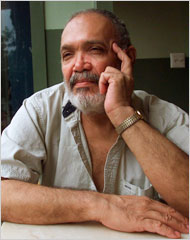Click below to watch a documrntary trailer for “CopWatch : What’s your badge number?” specifically documenting the history of Sunset Park Brooklyns communities police problem:
CopWatch / What’s your badge number?
http://vids.myspace.com/index.cfm?fuseaction=vids.individual&videoid=2034786634
http://vids.myspace.com/index.cfm?fuseaction=vids.individual&videoid=2033434037
As summer begins in NYC, the weekends get filled with cultural parades and an array of activities that is distinct to each community and neighborhood in NY.
The Puerto Rican Day Parade brings millions of people alongside 5th Ave on the east-side of manhattan. Many who return from the main parade continue to celebrate in their neighborhoods as we pour out onto the streets waving flags, salsa music blaring from speakers and conga players drumming those African Rhythms of our roots.
In communities such as Sunset Park in Brooklyn, a mostly Puerto Rican neighborhood, year after year, local youth are all too familiar with the aggressive confrontations of police officers who greet them with shoves and batons to the head. Many are corralled and pushed around from block to block as cops claim that these are disturbances to the quality of life in the community.
CopWatchers have documented these mistreatments, videotaping police shoving youth right in front of their own homes who aggressively told that they must clear the streets immediatley or face arrest, many clearly never even getting the opportunity to walk away.
Droves of young people get assaulted. Including an 8 yr. old girl who was shoved onto a gate in June of 2004. Teenage girls were maced, chocked and manhandled by NY’s Finest, 72nd pct. 19 young people were assaulted and charged for misdemeanors including disorderly conduct and resisting arrest, all of which eventually got dropped because police officers failed to prove why they were charged.
None of the officers were ever charged. All continue to work 72nd pct in the same community. Year after year, police aggression during the Puerto Rican Day Parade have escalated to levels reminiscent of those same images taken in the 50’s and 60’s of police violence.
As a result, in 2006 community members/local clergy and cultural workers organized a free concert which at the same time served as a campaign to educate folks on their rights when dealing with police conflict. The concert was called “El Grito de Sunset Park” and it went on, even though the 72nd pct. police community affairs officers and the commanding officer refused to grant them a sound permit.
That year, no one was arrested, even with all the police provocation. Irish communities in NYC have not recieved the same level of aggression from the police during their st. patricks day parade. Copwatchers have also documented the NYPDs tolerence for public intoxication and have also witnessed the blind eye police give to their selected communities. Could it be that the NYPD favors selected ethnic groups? Is it because the NYPD has historically been an Irish dominated run department within the state.
This is not to take away from the Irish community from peacefully celebrating their pride and culture, but one would like to believe that everyone has the opportunity to have a day in which they can celebrate without being discriminated against because of their race and culture. So once again, the community will come together for “El Grito de Sunset Park 2, 2007” along 49th St. and 5th avenue @ 6:30pm in Brooklyn despite the 72nd pcts. commanding officers attempt to deny the community members its sound permit. And despite the fact the the NYPD has permanently installed survelience cameras at all the places were CopWatchers documented police violence in years past. Are those cameras there to document police conflict? Or are they there to selectively chose video for manipulation as an excuse to the NYPD’s violence?
But just like 2006, the community will gather for a peaceful day to enjoy music, celebrate its pride and ultimately a showing that this community can police itself without the need of the NYPD.
